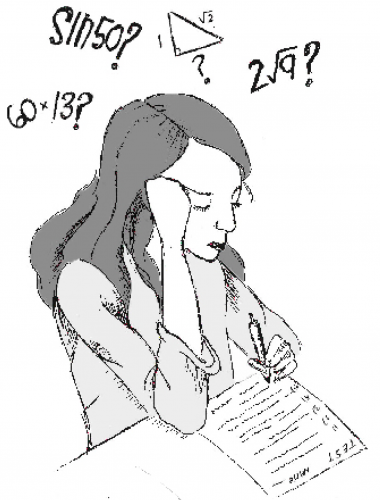CAHSEE Scores Hinder PI Status Removal
OLIVIA CHEUNG
Editor in Chief
A new school year brings new beginnings, but it also reflects upon past achievements and milestone challenges that have yet to be overcome.
Despite improvement from the 2010-2011 school year, AHS will remain in Program Improvement (PI) status due to unsatisfactory CAHSEE scores from the 2011-2012 school year.
Under the Elementary and Secondary Education Act (ESEA) established in 1965 lies a program called Title I, which provides financial assistance to local educational agencies (LEAs) and schools with high percentages of students who originate from low-income families. Its purpose is to ensure that all children have the opportunity to meet state academic standards in reading and mathematics.
AHS is a Title I school that adheres to two accountability systems that focus on how well students are learning: Academic Performance Index (API) and Adequate Yearly Progress (AYP). API is a state system that indicates if state intervention programs are required for certain schools who do not have satisfactory California State Testing (CST) scores. AYP, on the other hand, is a federal system used to indicate PI status.
While API is based on growth in test scores from one year to the next with the state’s target being 800 points, AYP is based on four different requirements: student participation in testing, percentage of students proficient in English-Language Arts and mathematics, API and high school graduation rate.
With each year they remain in PI status, the schools are responsible for implementing certain federal and state requirements to further academic learning.
AHS was placed under PI status two years ago for not meeting the objectives set for CST and CAHSEE scores. To leave PI status, a school must meet AYP standards for two consecutive years in the same content area (English-Language Arts or mathematics) schoolwide or for numerically significant subgroups. Each subgroup must have a minimum of one hundred students.
If a school meets AYP standards for the first year, its status remains until second year results are released. However, if a school fails to meet the set standards the first year, then it will fall further into PI status, which requires immediate implementations of applicable ESEA requirements. At that point, parents of children in those schools are given the option to transfer their children to other schools that are not in PI.
For the 2011-2012 school year, AHS fulfilled all but one requirement: percentage of students who were at least proficient in English and mathematics. Last year’s requirements to exit PI status needed 77.8 percent of students to score proficient in English-Language Arts and 77.4 percent of students to score proficient in mathematics.
However, AHS’ estimated proficiency rates in English-Language Arts and mathematics were 59.3 percent and 69.5 percent, respectively, resulting in another year of PI status.
“It’s frustrating because even if we had reached the target ‘proficient’ rate, the target number goes up every year and it will get increasingly harder to attain,” math teacher Ron Matossian said. “I believe that, over time, enough schools will go into program improvement status that the policy will become untenable and the politicians who make the rules will have to reevaluate the whole thing.”
To encourage students to continue doing their best despite budget cuts, the school implemented several changes this year. For example, the
Advancement via Individual Determination (AVID) program was cut in AHS. To make up for that loss, the school created its own support group known as Horizons in place of AVID. Another change is the addition of the AP Human Geography course, primarily for freshmen, so that they can “start off high and continue on from there,” according to Principal Brad Walsh.
“Knowing this definitely encourages us as sophomores to do well this year so that we can show people the Class of 2015 is not one to look down on,” sophomore Edwin Cheung said.
Furthermore, Walsh and school officials are already looking ahead to next fall for continued improvements.
“We hope to strive for next year where all ninth graders will be able to have a science class,” Walsh said. “When it’s time to take the CAHSEE this year, we need everyone on campus to support the tenth graders.”
As another school year progresses, the proficiency rate set for AYP criteria continues to rise.
“It saddens me that a school’s success is dependent on test scores that fail to test true critical and divergent thinking,” English teacher Dorothy Burkhart said, “but that is our reality so we must do everything we can to help our students do both: excel on standards-based tests and also examine the complexity of ideas.”
